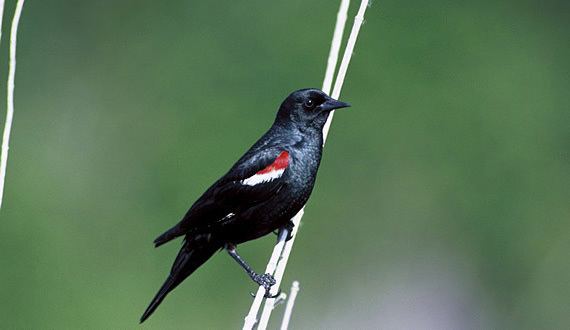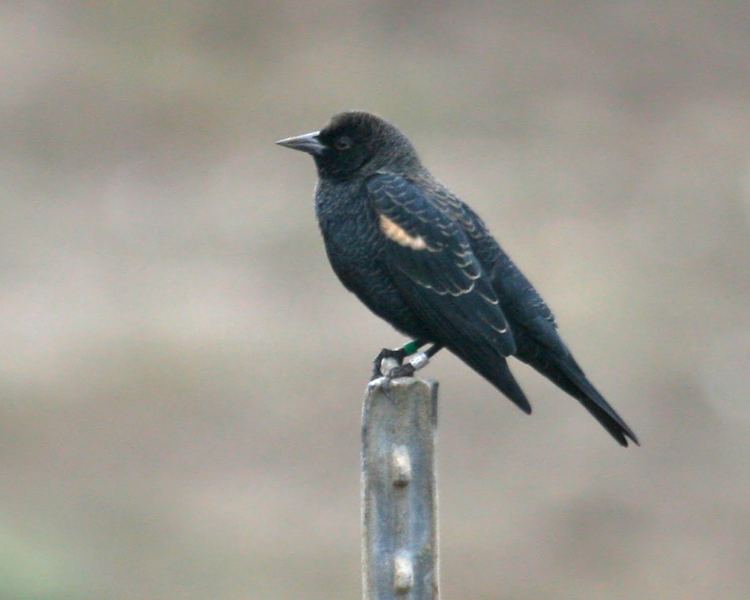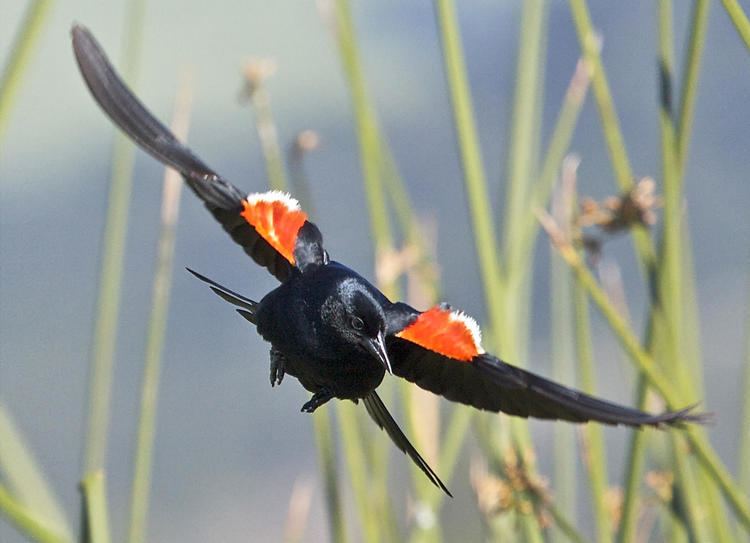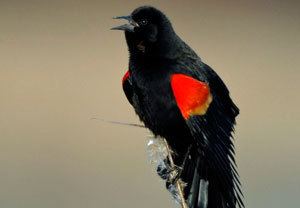Order Passeriformes Genus Agelaius Higher classification Agelaius | Phylum Chordata Scientific name Agelaius tricolor Rank Species | |
 | ||
Similar Bird, Agelaius, Brewer's blackbird, Yellow‑headed blackbird, Scott's oriole | ||
Tricolored blackbird nominated for 2012 bird of the year
The tricolored blackbird (Agelaius tricolor) is a passerine bird of the family Icteridae. Its range is limited to the coastal areas of the Pacific coast of North America, from Northern California in the U.S. (with occasional strays into Oregon), to upper Baja California in Mexico.
Contents
- Tricolored blackbird nominated for 2012 bird of the year
- The tricolored blackbird in california
- Endangered status
- References

This highly social and gregarious bird forms the largest colonies of any North American landbird, with a single breeding colony often consisting of tens of thousands of birds.
The common name is taken from the male bird's distinctive white stripes on bottom of their red shoulder patches, or "epaulets", which are visible when the bird is flying or displaying.

Despite the similar names, this bird is not related to the Old World common blackbird, which is a thrush (Turdidae).

The species' call sounds slightly more nasal than that of the red-wing's - a nasal kip and a sharp check. The male's song is a garbled on-ke-kaaangh. The bird migrates south during the colder seasons to Mexico and back to northern California during the warmer seasons.

The tricolored blackbird in california
Endangered status

In 1990 the Department of Fish and Game (DFG) of California, based on significant decline in population numbers documented in the 1980s, added the tricolored blackbird to the published list of "Bird Species of Special Concern". This classification is an "administrative designation intended to alert biologists, land managers and others to a species declining status and encourages them to provide additional management considerations". At this time the tricolored was added to the U.S. Fish and Wildlife Service (USFWS) list of Birds of Conservation Concern.
By 1991, the tricolor's breeding population had fallen to approximately thirty-five thousand adults. This prompted a petition submitted by the Yolo chapter of the National Audubon Society to the California Fish and Game Commission. The petition brought the tricolored blackbird under consideration for endangered classification. The classification was granted until the breeding season in 1992. It was then that researchers discovered a population exceeding three hundred thousand adults. A petition to withdraw the endangered classification was submitted and accepted. Conservation measures were supposed to be developed and implemented to avoid a future decline as seen before. These measures were developed, but only very limited progress was made in preventing the future decline of the tricolored blackbird. Interested groups started reconvening shortly after the year 2000. Managing groups found startling results when conducting population research.
In 2006 the tricolored blackbird was classified as Endangered by BirdLife International. Like the extinct passenger pigeon, the colonial nature of the tricolored blackbird makes it particularly vulnerable to extinction. Native grasslands once used for nesting and feeding have been lost to urban and agricultural development. Birds adapted to nesting in agricultural fields have been disturbed by harvesting during the breeding season. Once the tricolored blackbird was placed on the BirdLife Endangered Species list, it officially became a concern both regionally and nationally.
The U.S. Fish and Wildlife Service maintained the following "Primary conservation priorities for Tricolor habitat conservation and management" (The Tricolored Blackbird Working Group, 2007):
